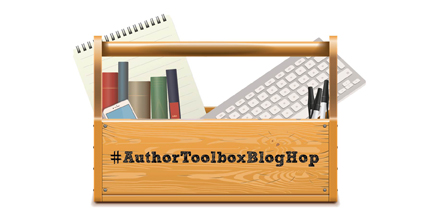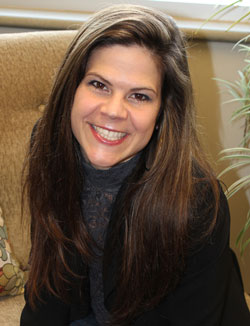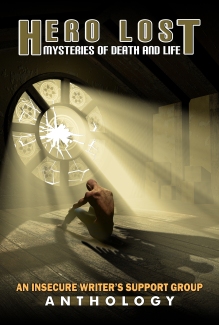The Lie We Love To Read #AuthorToolboxBlogHop #amwriting

The Author Toolbox Blog Hop is “a monthly blog hop on the theme of resources/learning for authors: posts related to the craft of writing, editing, querying, marketing, publishing, blogging tips for authors, reviews of author-related products, anything that an author would find helpful.” Want to jump into the writing tool box? Search #AuthorToolboxBlogHop or to join via blog, click here.
Thank you Raimey!
***

Would you agree that most people are creatures of habit?
If you agree, and maybe you’re one of them, do you believe people have a difficult time adjusting to change?
According to K.M. Weiland in Creating Character Arcs, characters like people wish for change, swear they’ll do it either to themselves or for someone else, but all in all, they fight tooth and nail against change. Unless something major happens to them, hence the plot.
Today, I’m reflecting on the character arc and the reason behind change: the lie we hold as truth so tightly we can’t see or allow ourselves to believe in any other way.
Unless something major happens and we do change.
Really change.
And hopefully for the better.
The thing that keeps us from change is the what Weiland points out is “The Lie.”
And what is a lie?
Something in your character’s life is lacking, “some reason that makes the change necessary … He is harboring some deeply held misconception about either himself, the world, or probably both. This misconception is going to prove a direct obstacle to his ability to fulfill his plot goal.” (Weiland)
Let’s take one of my favorite movies: Star Trek.
Young Kirk starts off stealing a corvette, completely alone, and defies the local police by driving it straight off a cliff. He survives. The car does not. He could have died. But he has something to prove: rebellion, independence, and affirming his deeply healthy ego in how right and awesome he is.
According to K.M. Weiland, a character arc for positive change is made up of The Want, The Need, and The Lie.
This Lie “plays out in your character’s life, and your story, through the conflict between the Thing He Needs (the Truth) and the Thing He Wants (the perceived cure for the symptoms of the Lie). Chapter Two.
The Kirk Want = He lives for himself, his own rules/kingdom, and no one will get hurt because no one else is let into his world.
The Kirk Need = Earn honest respect in Leadership by putting others first, like his dad.
The Kirk Lie= Being right and doing it better than anyone else makes you the best at whatever cost.
So how do you find the lie?
Weiland has a great list of questions to consider and I’ll just mention my two favorite:
- What misconception does your protagonist have about himself or the world?
- When the story opens, is the Lie making his life miserable? If so, how?
There are so many other great questions to consider. Need more examples? The book is filled with them. I also ordered the Character Arcs Workbook as a secondary resource. So far I’m loving them both so much.
Happy Hop Day 🙂
Posted on May 15, 2019, in Uncategorized. Bookmark the permalink. 19 Comments.




“The Lie” is a powerful character and plot tool 🙂
Ronel visiting on Author Toolbox day 6 Tips to Think Like a Book Blogger
Ooooh! I need to consider this and read on it more before I move forward with my current project.
I am not very far in, but I wish I would have found it sooner. It’s wonderful 🙂
Thanks for the info. Food for thought, and that’s no lie. 🙂
Anna from elements of emaginette
Something to consider. We all hold misconceptions about ourselves and it’s hard to break past them. Unless forced. Plot point!
How we see ourselves is often not the truth about us.
oh nice post! I’ve never thought about this, but it’s along the lines of character motivation, but yet a little different. But the Lie is important to lead to the change and to give the character some agency in what happens to them.
Ooooh, this made me think. So, is “the need” something that the character doesn’t know that he needs or “the unknown need”? Because a character can think he needs something, but this seems to be more something that he doesn’t know yet that he needs, that he arcs to discovering that he needs. One day, I’m going to read everything she wrote. Great post!
This post is super-helpful for me as my protagonist undergoes internal change similar to what you describe. I like the questions you pose for writers to ask themselves. Thanks for sharing!
I am glad I had something useful to share 😊
I’m answering those questions about my current WIP hero and heroine. You’ve given me something to think about.
That makes me happy Susan 😊
Great tip. As a social worker, I realize the goal of a lot of therapy is to achieve congruence, or adjusting the reality with the perception. It makes sense for characters to seek that out too.
You have so many gifts Elizabeth. I love
Your insights 😊
Hmm, I think there are some points here for me to consider for my WIP. Thank you.
Great tips! I’ve heard a lot of good things about Weiland’s books. I’m going to have to check them out. Thanks for sharing. 🙂
I love the example you’ve given. It clearly helps to understanding the concept. The key component in story is as you’ve quoted: there needs to be “some reason that makes the change necessary” for the character. Thanks for sharing this with your followers, Erika.
This first manuscript that was professionally edited looked like it was suffering a disease from so much red. I could have cried.
Thank you Elizabeth. You always make me smile 🙂